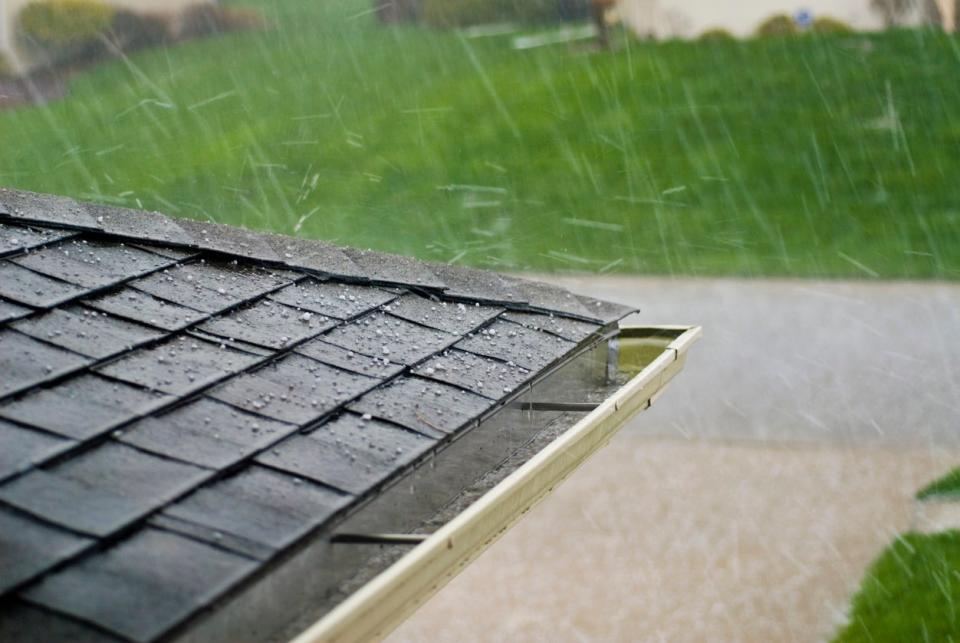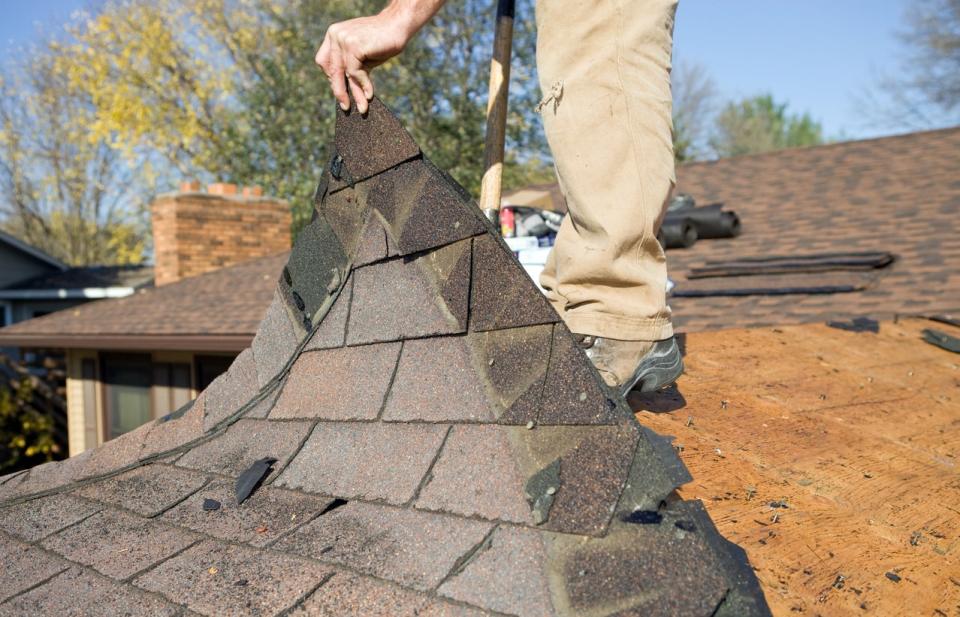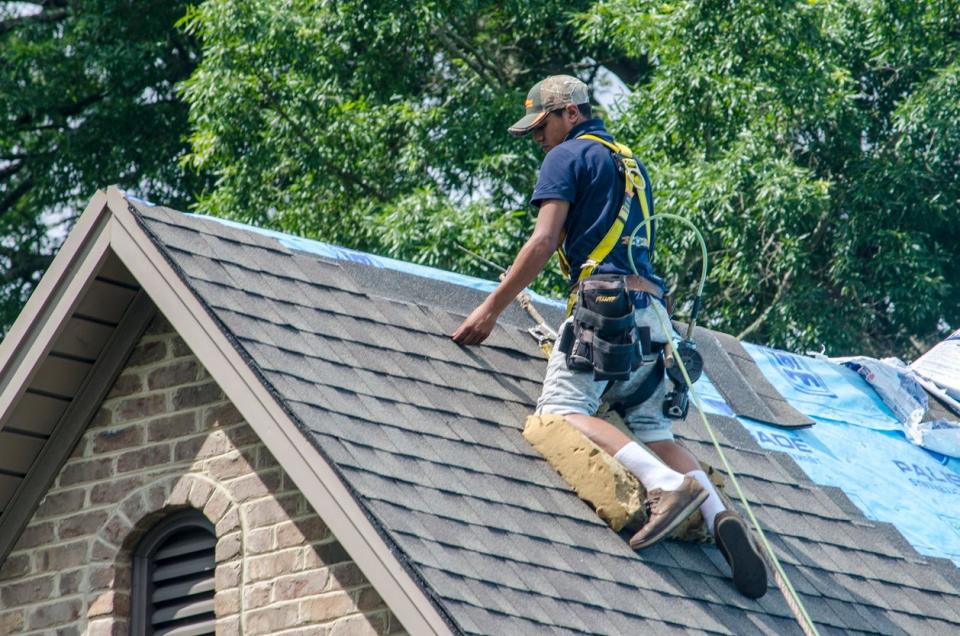Hail Damage vs. Blistering: 4 Crucial Differences Between These Types of Roof Damage

A damaged roof can require an expensive repair, but the extent of the repair (and the associated cost) will depend on the cause of the damage. A common cause of roof damage is a strong storm—particularly one that includes major hail and results in nicks and dents in the roof. Before submitting an insurance claim or attempting to remedy the damage themselves, however, homeowners will want to familiarize themselves with the difference between hail damage vs. blistering, just in case the damage was there before the bad weather came to town.
Hail damage on a roof can easily be mistaken for blistering, and vice versa, which is why it helps for a homeowner to consult a professional roofer at the outset. Whether they’re dealing with small hail damage on the roof or blistering can determine the type of repair a homeowner needs, as well as how much it will cost. The guide below can help homeowners understand the differences between each type of damage and what next steps to take.
1. Hail damage on a roof presents as widespread small round or oval dents, as well as dislodged granules from shingles.
Depending on the severity of the storm and the type of roofing material a home has, hail damage can look like visible dents or cracks on shingles, bare spots or exposed areas from missing granules, and broken or cracked tiles. Any denting will look like round-shaped depressions, while cracks will resemble straight or jagged lines. However, hail damage that’s in need of repair may not always be identifiable at ground level, which is why it can help to have the roof inspected by a professional once storms have passed and it’s safe to do so. The International Association of Certified Home Inspectors (InterNACHI) provides professionals with clear guidance on how to identify hail damage during a roof inspection.
2. Blistering can resemble hail damage, but it produces raised bumps with irregular shapes that protrude from the surface of the roof and leave pits or pockmarks.
As opposed to hail damage, which causes dents in a roof, blistering looks more like raised bumps or bubbles on individual shingles. These raised areas can range in size from a few to several inches in diameter and often make the affected areas look uneven or bulging next to undamaged sections. If the blistering has occurred over time and gone unaddressed, it can cause discoloration due to the collection of dirt and debris.
3. Hail damage tends to have a regular pattern, while blistering occurs more randomly.
Since hail damage comes with strong storms, or if it falls in a concentrated area and not over the entire roof, it often creates a pattern on the roof from the direction the wind was blowing. This is one distinction that can help homeowners determine whether the damage they’re looking at is from hail or blistering, because blistering occurs much more randomly and without an identifiable pattern. If a homeowner does notice a pattern in the roof damage, they’re likely dealing with hail damage. In this case, hail damage repair costs anywhere from $285 to $57,500, depending on the extent of the damage. The good news is that the repairs to hail damage on a roof could be covered by the best homeowners insurance companies (such as Allstate), so long as the policyholder meets the parameters.

Photo: istock.com
4. Blistering is caused by trapped moisture, inadequate attic ventilation, or tree sap weakening the shingles.
When moisture becomes trapped within the layers of the roofing material, it can cause the formation of blisters. This often happens as a result of improper installation or inadequate ventilation, which allows moisture to build up and become trapped. Because improper installation is one of the main causes of blistering, it’s imperative for homeowners to hire a licensed, reputable roofing company to install their roof so that they don’t have to deal with the headache of repairs—or, in a worst-case scenario, whole-roof replacement.
Along with the natural wear and tear that comes with an aging roof, other issues can cause blistering. These include heat and prolonged exposure to the sun; this causes the roofing material to expand, which can form blisters. In addition, tree sap can weaken the roof shingles and lead to blistering when exposed to the elements.
5. Homeowners need to address hail damage or blistering as soon as they notice it to avoid future issues.
The sooner a homeowner addresses the damage on their roof, the less likely they are to come across more extensive damage down the line. Although a handful of damaged shingles may not seem like a big deal, it can create a domino effect that leads to the breakdown of other shingles, as well as leaks from the roof into the attic or other storage areas. Plus, dents or holes in shingles can leave the asphalt layer underneath exposed to the elements, weakening the bond between the asphalt layer and the roof, which can make the shingles brittle or cause them to expand and contract. It’s safe to say that once a homeowner has identified hail damage on the roof or blistering on the shingles, it’s wise for them to repair the damage as soon as possible.

Photo: istock.com
6. The best way for a homeowner to determine the type of damage their roof has is to hire a professional roofing inspector.
Although homeowners may be tempted to try to identify the type of damage that’s affecting their roof themselves, a licensed roofer will be able to assess the issue and provide a plan to treat the damage before it creates more problems. Because hail damage and blistering are hard to differentiate, it’s best for homeowners to have one of the best roofing companies inspect their roof with trained eyes so they can give the homeowner a professional opinion as well as an estimate for what the repair will likely cost. Whether the home has a blistering roof or needs hail damage roof replacement, a professional roof inspector will be able to recommend next steps to put the homeowner’s mind at ease.
7. DIY roof repair is not recommended: not only is it dangerous, but it can also void the roof’s warranty.
Even experienced DIYers will want to shy away from tackling roof repair; they could not only make a mistake that results in more damage but also void their roof’s warranty by not hiring a professional. Although DIY hail damage repair may seem like a good way to save on roof repair costs, which can range from $379 to $1,758, in this instance a homeowner is better off hiring the work out so as not to risk their personal safety, experience trouble filing an insurance claim, or complete a temporary fix that doesn’t solve the problem long term. Plus, this type of project could take a homeowner weeks to finish, whereas a professional roofing company can likely have the roof looking brand new in hours.

Photo: istock.com
8. A homeowners insurance policy may help pay to repair or replace a roof damaged by a covered event such as hail, provided the homeowner has kept up with regular maintenance.
It’s no secret that homes located in areas that are prone to severe storms are at risk of the roof being damaged by large hail or strong winds. In some cases, a homeowners insurance policy can help cover the cost of roof repairs or replacement if the damage is related to hail. However, the deductible must be paid first, and coverage would only apply if the homeowner has kept up with their roof’s maintenance. To see if their homeowners insurance covers roof repairs, the homeowner will need to read the fine print of the policy to see what types of situations or repairs are covered.
If the policy covers roof repair, the homeowner will need to file a claim with their insurance company, which will then have an inspector come out to assess the damage and determine what type of repair is needed. If the damage is only cosmetic or if the roof is considerably older, it’s likely that insurance wouldn’t apply. If this is the case, it’s best for a homeowner to contact their insurance company to speak with someone directly before filing a claim, as this can cause rates to increase, even if no claim is paid.
9. The manufacturer’s warranty on the roof may cover asphalt shingle blistering.
Since homeowners insurance is unlikely to cover roof shingle blistering, a homeowner’s next bet to get any repairs covered is to look at the manufacturer's warranty coverage, if it’s available. Because flat roof blistering or other types of blistering can be caused by improper roof installation, there’s a chance a homeowner can get any necessary repairs covered through the warranty itself. This will likely require a roof inspection to determine the cause of the blistering and whether it is due to installation snafus or other issues. In some cases, a home warranty may cover roof issues, but that’s usually only in cases where the homeowner can prove their shingles are defective or the materials that were used to install the roof itself are defective. Homeowners can look into the best home warranties for roof coverage (such as American Home Shield or Choice Home Warranty) to determine if this is something they would find beneficial.


